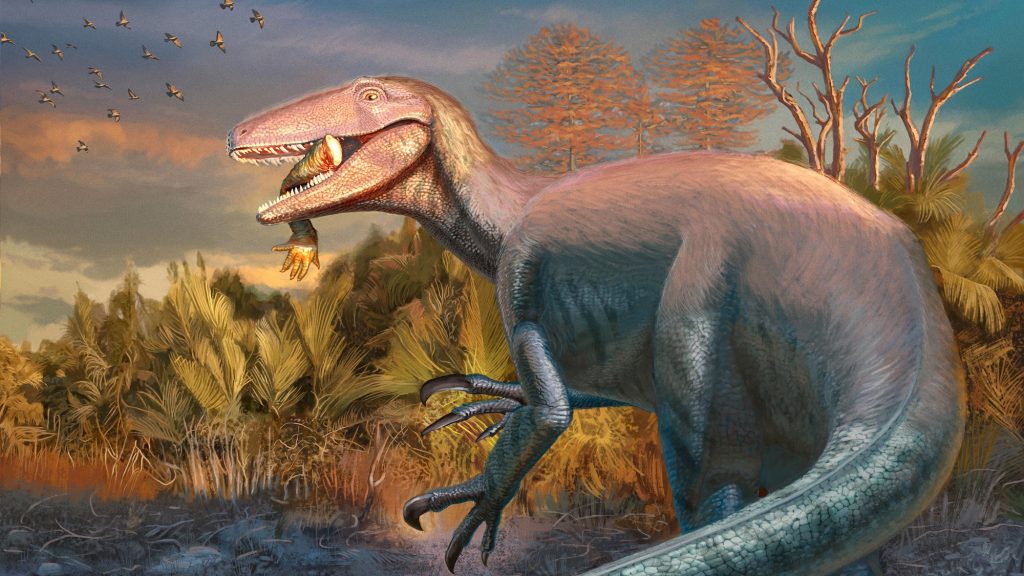Paleontologists have discovered a carnivorous dinosaur in central Patagonia that they believe occupied the top of the Late Cretacean food chain. For additional proof, they point to its likely final meal. According to new analysis published on September 23 in the journal Nature Communications, Joaquinraptor casali appears to have died with an ancient, nearly 8-inch-long crocodile leg next to its jaws.
A wide range of theropod dinosaurs walked the earth during the Cretaceous Era (about 143 to 66 million years ago). One of these was a family of considerably large predators known as megaraptorans, equipped with long skulls, strong forearms, and large claws. Paleontologists have excavated various megaraptoran remains across Asia, Australia, and especially South America. However, these mostly exist as fragmentary specimens with few overlapping species examples. Because of this, little is known about the megaraptora family tree and its evolutionary trajectory.
Over a decade ago, paleontologists discovered a remarkably well-preserved example of a never-before-seen megaraptoran in central Patagonia, near the headwaters of the Río Chico. Within a larger fossil deposit known as the Lago Colhué Huapi Formation, researchers identified portions of the unknown theropod’s skull, limbs, ribs, and vertebrae.
After years of detailed analysis, paleontologists can now confirm that the bones belong to a unique and previously unknown megaraptoran named Joaquinraptor casali. Microstructural analysis of the bones indicate that the specimen was an adult at the time of its death. That said, it possibly wasn’t fully grown even at around 19 years-old. Researchers estimate J. casali was around 23 feet long and weighed over 2,200 lbs. J. casali is named as a tribute to the son of study co-author Lucio Ibiricu, as well as the valley’s informal name.

Its placement within the geological layers also suggests the dinosaur lived 70 to 66 million years ago, making it one the last known examples of megaraptorans. These sedimentary conditions also suggest the predator spent the majority of its time in warm, humid floodplains—a theory supported by grisly nearby evidence pressed against the dinosaur’s lower jaw.
“The preservation of a crocodyliform humerus between the dentaries of the new theropod may provide information on megaraptoran dietary preferences and feeding strategies,” the studies authors explain.
It’s unlikely that paleontologists will ever confirm if their J. casali specimen died while munching on its final meal. That said, its size and anatomy clearly indicate it was a formidable theropod and could eat large prey. While additional questions remain about its larger megaraptoran family, the new dinosaur’s fossils—both its own and its likely prey—suggests that J. casali were some of the late Cretaceous’ most fearsome creatures.


